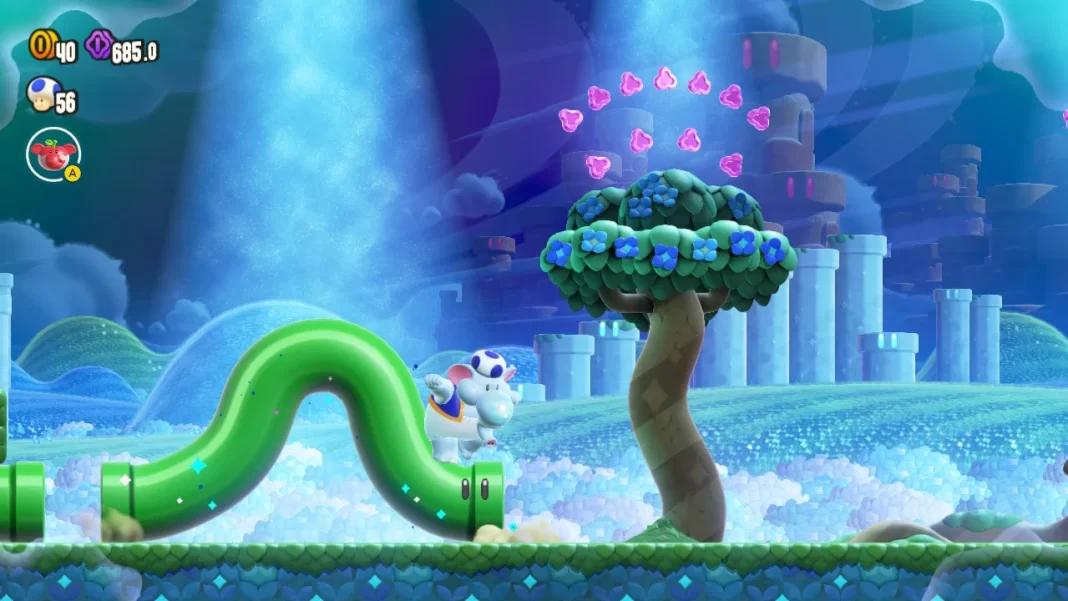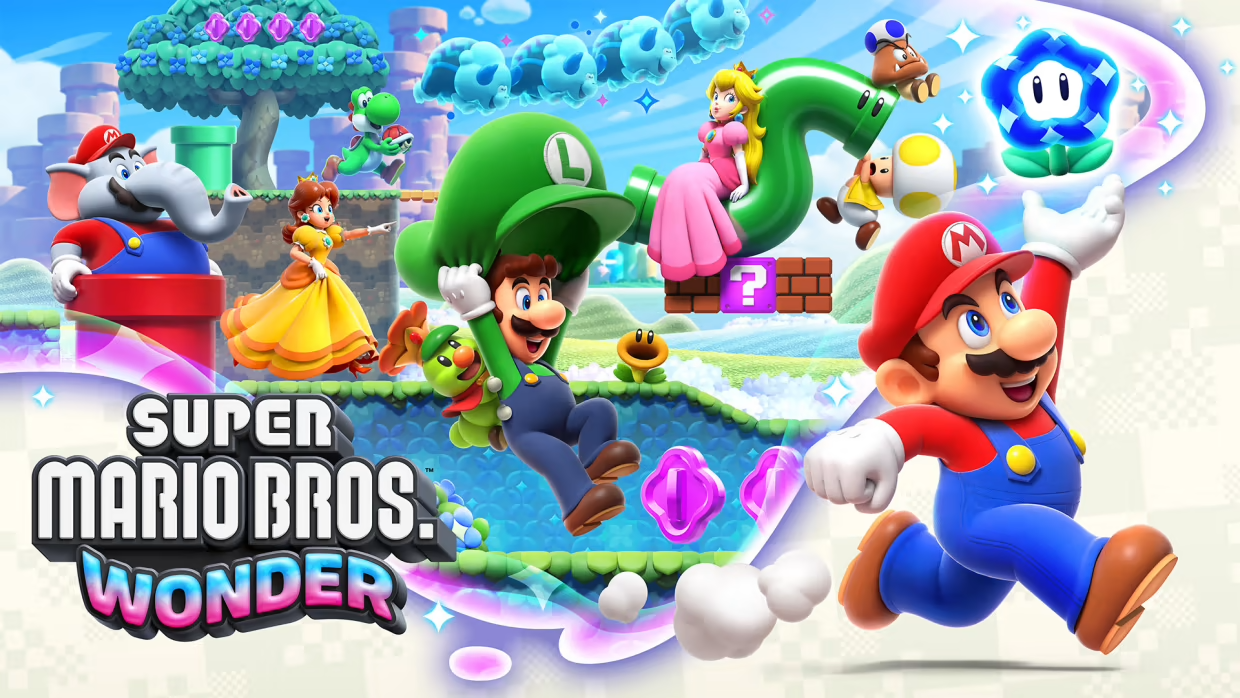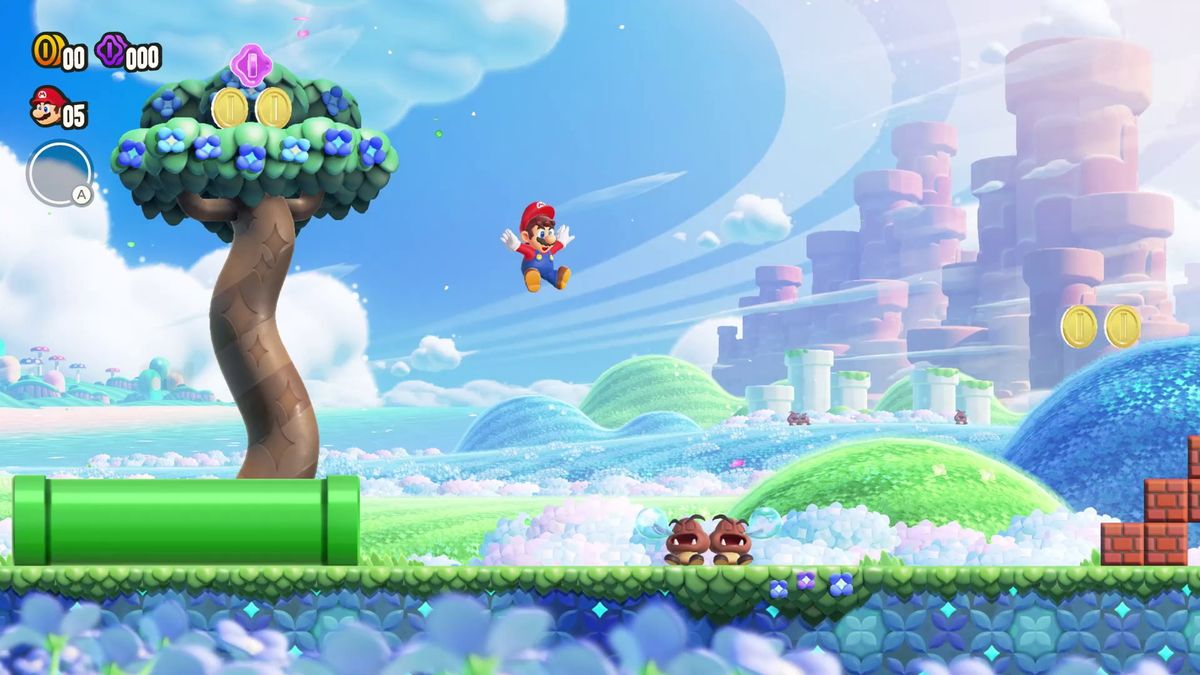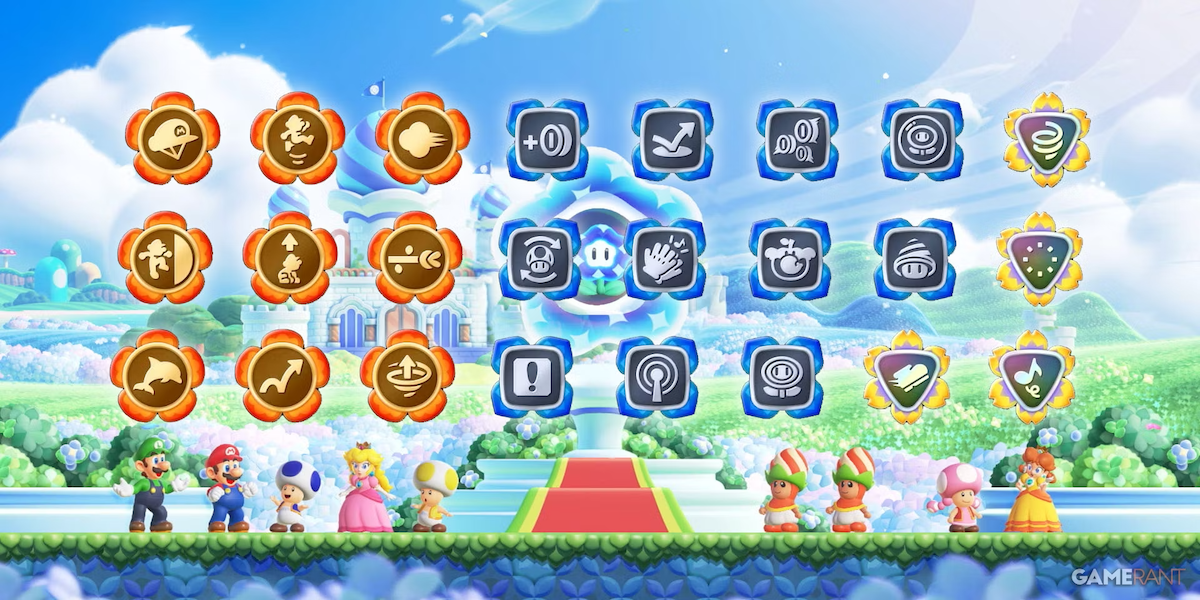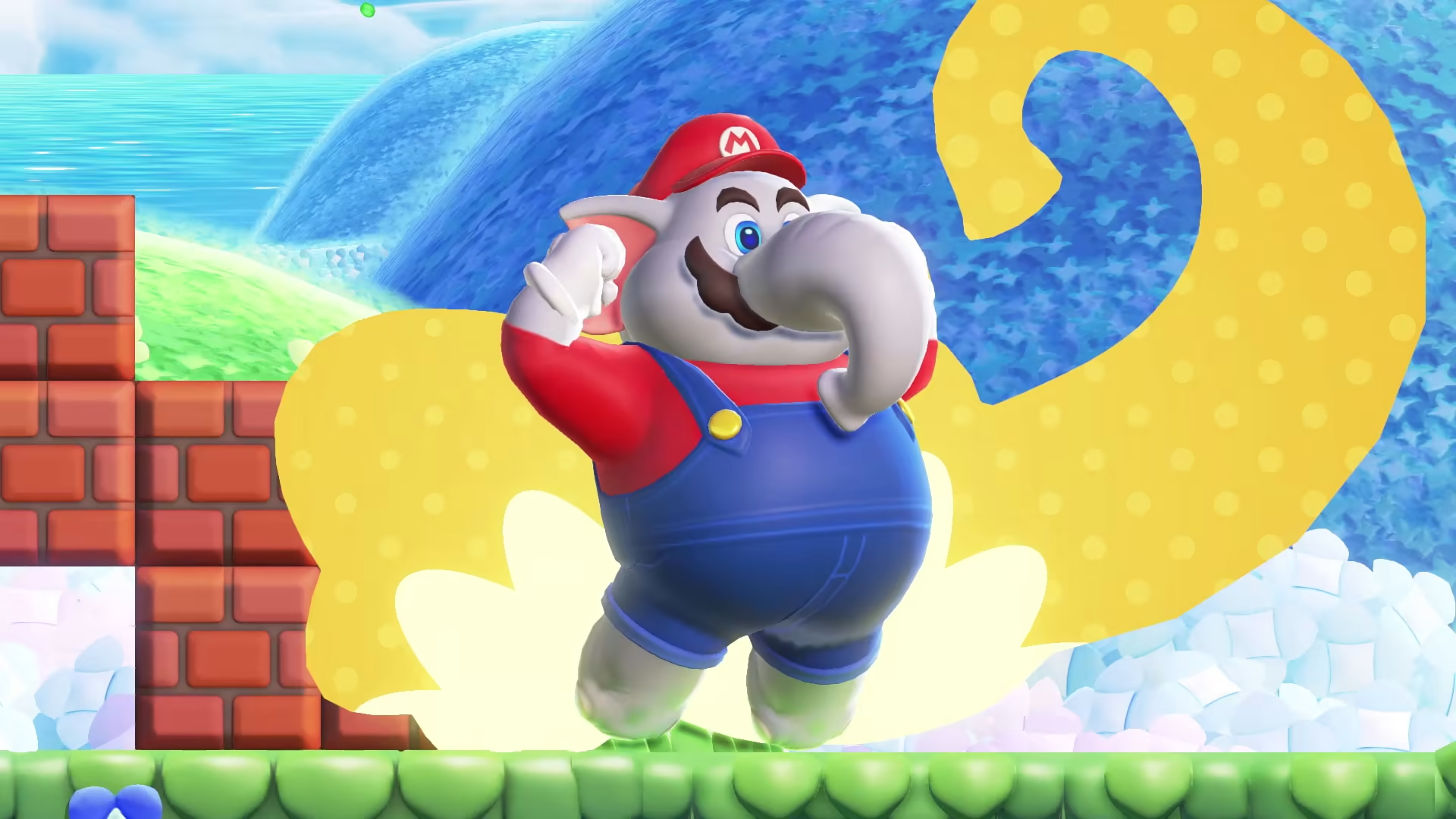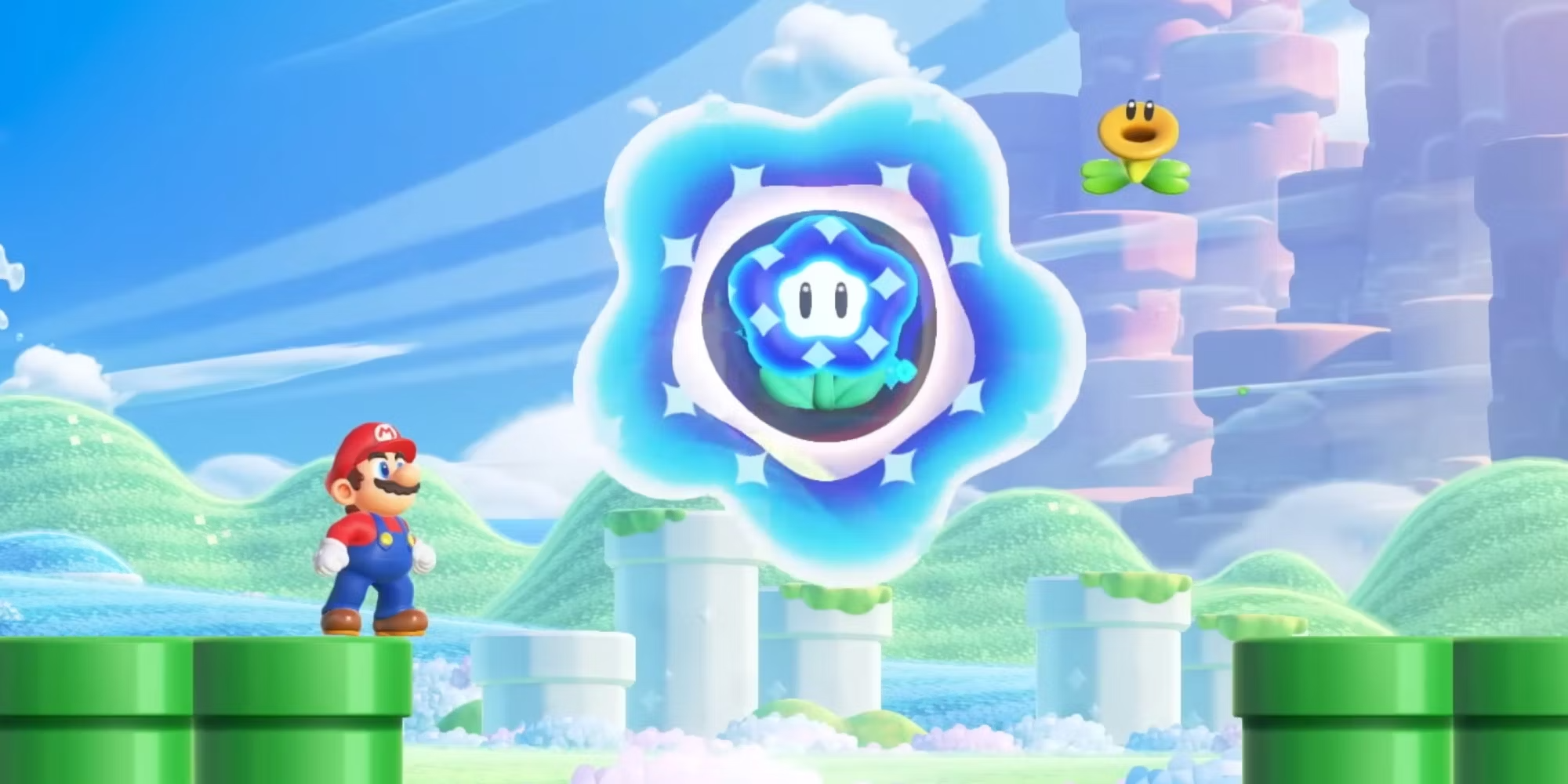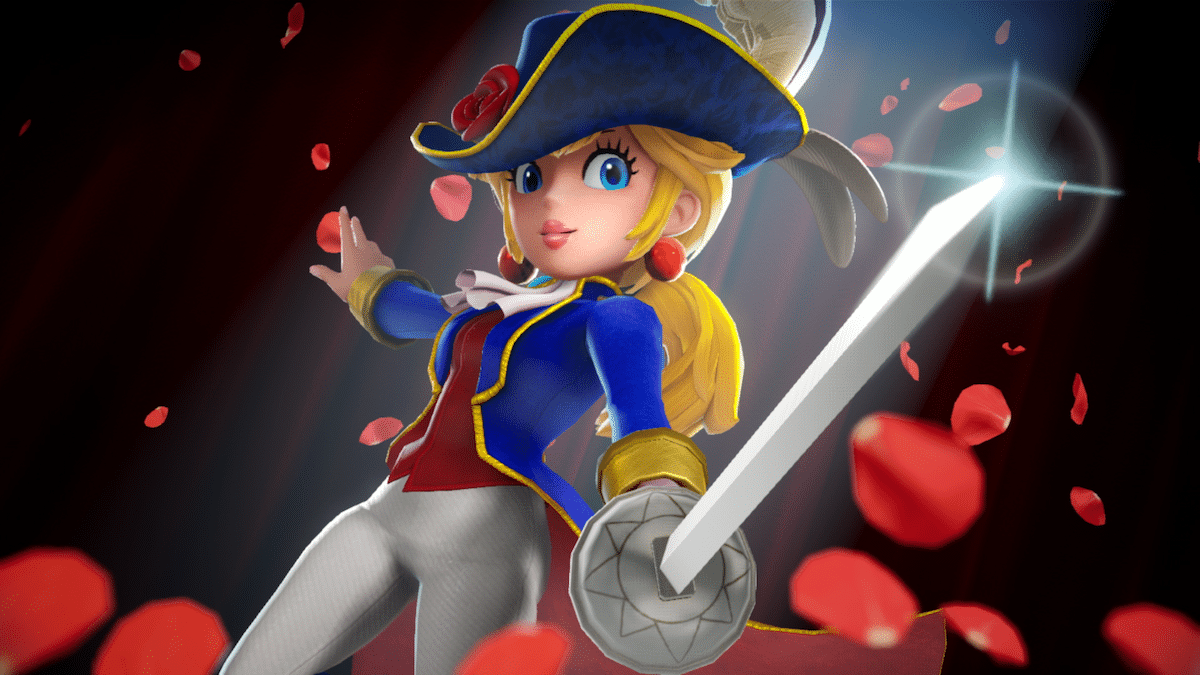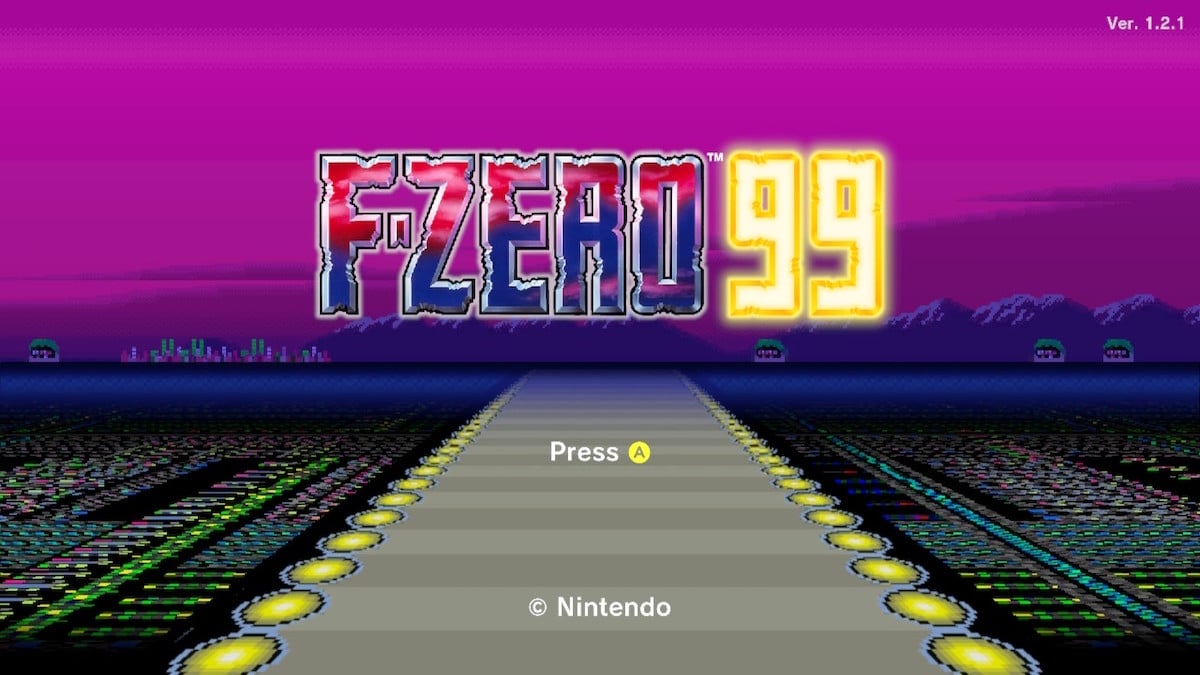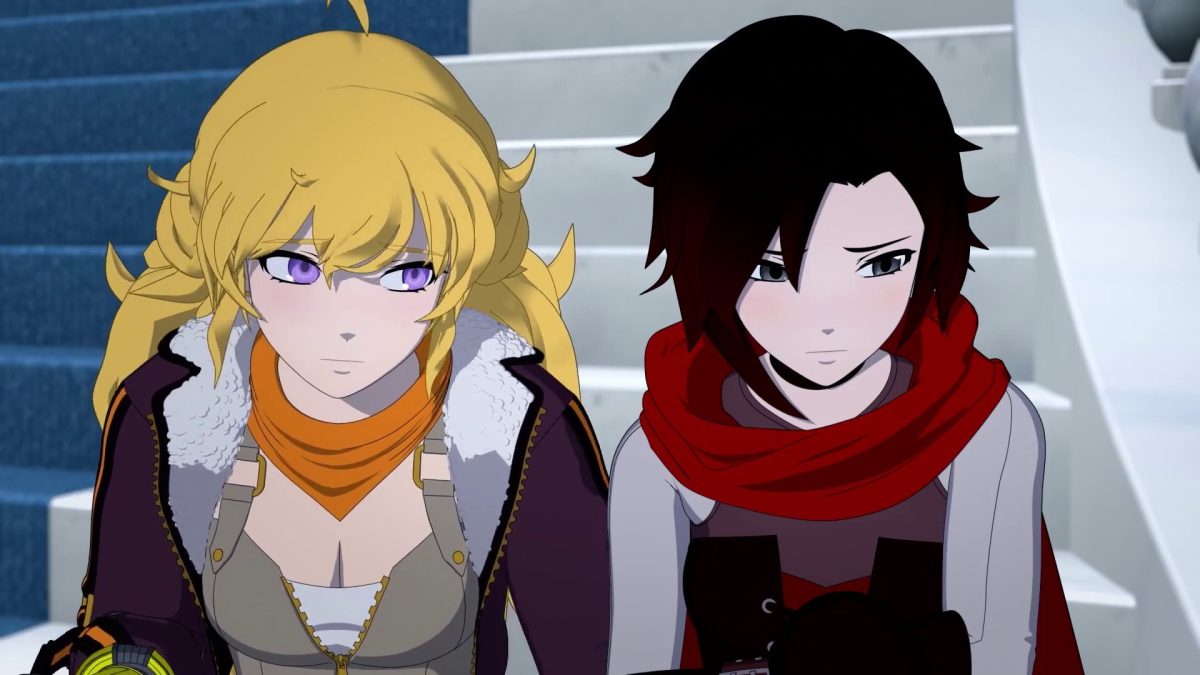Super Mario Bros. Wonder is the game fans and critics have been waiting for. The art style of 2D Mario titles has remained stagnant since 2006’s New Super Mario Bros. for the Nintendo DS, with 2.5D graphics lacked the personality of the Mario titles released for the NES and Super Nintendo. The New Super Mario Bros. games played well, with solid platforming and a unique-at-the-time co-op feature for the Wii and Wii U releases. But all the titles followed the same formula, rescuing Peach again and again by venturing across the Mushroom Kingdom, and lacked the vibrancy found in the 3D Mario titles. Fans clamored for something new from 2D Mario, and this year Nintendo delivered.
Super Mario Bros. Wonder is a fresh coat of paint for the series, trading the stale animation of the New Super Mario Bros. series for a more expressive, joyful take on Mario and friends. And importantly, the game finally takes the characters out of the Mushroom Kingdom. Wonder‘s visual makeover is the most noteworthy improvement over the New series, resulting in not just a better looking but a better feeling game.
The New Super Mario Bros. titles are consistently entertaining, but lack ingenuity. All four games feature not just the same animation style but also almost-identical level and world design. Their development became so formulaic that the studio created the tools for Super Mario Maker almost by accident. Developers originally designed them for use internal use before developers recognized their potential for players. After two Super Mario Maker games, Nintendo clearly needed to make a change to its formula for 2D games. The result is a game so full of character and imagination it could only have come from Nintendo.
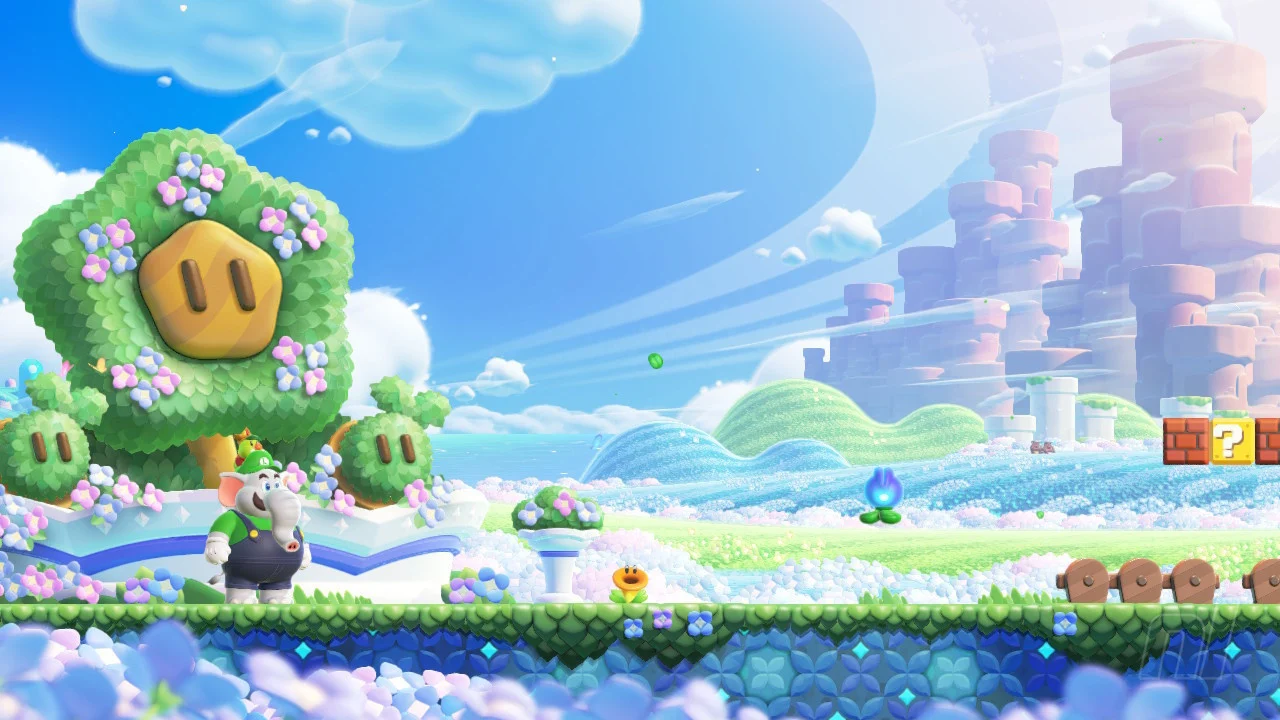
The new art style for Super Mario Bros. is still 2.5D, but richer and imbued with personality. Producer Takashi Tezuka told NPR that the team poured more development costs into the animation, which shows in the final product. The Flower Kingdom levels feature beautiful pastel-tinted backgrounds and colorful, inviting environments. Most importantly, the characters express themselves. The character models of the New Super Mario Bros. series are lifeless. Mario and friends wear the same hollow smiles at all times, and the enemies wear the same scowls. In Wonder, the heroes and the enemies actually react to their surroundings. When a Goomba sees Mario coming, it panics. The simple act of going through a pipe is magical, due to the animation of Mario squirming to get in and out. The vibrancy of the world and characters leaves players marveling at the events on the screen, the same way they’d react to a well-made animated feature.
The only negative change to the game in terms of its style is in the new voices for Mario and Luigi. The new voice actor, Kevin Afghani, is talented, but his rendition of Mario lacks the richness and fullness of the performances of Charles Martinet. Maybe it takes time to grow comfortable with a change like this, but the removal of Martinet feels like a huge loss.
Players might be surprised to learn that the platforming in Super Mario Bros. Wonder is nearly identical to the platforming of the New titles. An excellent comparison video by Good Vibes Gaming shows that the only meaningful adjustment is how Mario now loses momentum upon landing on the ground. Even so, the platforming experience slightly suffers due to Wonder‘s increased focus on other elements of the experience. Developers sacrificed the meticulous design from the New series for stages that put creativity first. However, fans seem comfortable with that tradeoff and Nintendo will undoubtably address the issue moving forward. Wonder is a first draft of a new kind of Mario. Now that Nintendo knows the shape and feel of its new approach to the series, developers will have ample opportunity to refine the platforming in future entries.
The game’s new art style alone is transformative, but it’s not the only change to the formula. Nintendo literally built the game around creating wonder, filling it with moments designed to surprise and delight. I won’t spoil any of them here. All I’ll say is the best moments are reminders that a game can be more than a series of challenges. On multiple occasions, stages transform from normal levels into theatrical experiences.
The game is also full of new mechanics, including badges that alter gameplay, new power-ups, and the scene-shifting Wonder Flowers. While they’re a mixed bag, the sheer inventiveness on display matches the ingenuity of the best 3D Mario games. At times, though, the abundance of new power-ups and badges can feel excessive, distracting from the elegance of past 2D Mario design. It’s a delicate balance that Nintendo doesn’t nail this time around.
The actual power-ups in Wonder are satisfactory, but nothing special. The Elephant Fruit earns points for the sheer charm of turning Mario into an elephant, but simply gives Mario the ability to hit enemies and sometimes throw water at them. The Bubble Flower can occasionally result in fun outcomes, but mostly operates similarly to a Fire Flower. The Drill Mushroom‘s ability to burrow underground is new to Mario, but commonplace in other 2D platformers.
The Wonder Flower, however, encapsulate Super Mario Bros. Wonder at its best. Collecting the Flower transform Mario’s surroundings and sometimes Mario himself. Examples of the transformations include causing all the pipes to spray water in symphony, turning Mario into a gooey creature who sticks to every surface, and reorienting the stage so that Mario traverses it like a top-down level. You never know what will happen when you reach the Wonder Flower. Occasionally, the results are underwhelming, but those brief disappointments are eclipsed by the many instances of creativity and ingenuity. There really is no adjective better to describe the game in those moment than wondrous.
Super Mario Bros. Wonder has some shortcomings, but Nintendo recaptured the spark missing from 2D Mario since Yoshi’s Island released on the SNES. It’s hard to ask for much more than that.
Review code provided by Nintendo.


